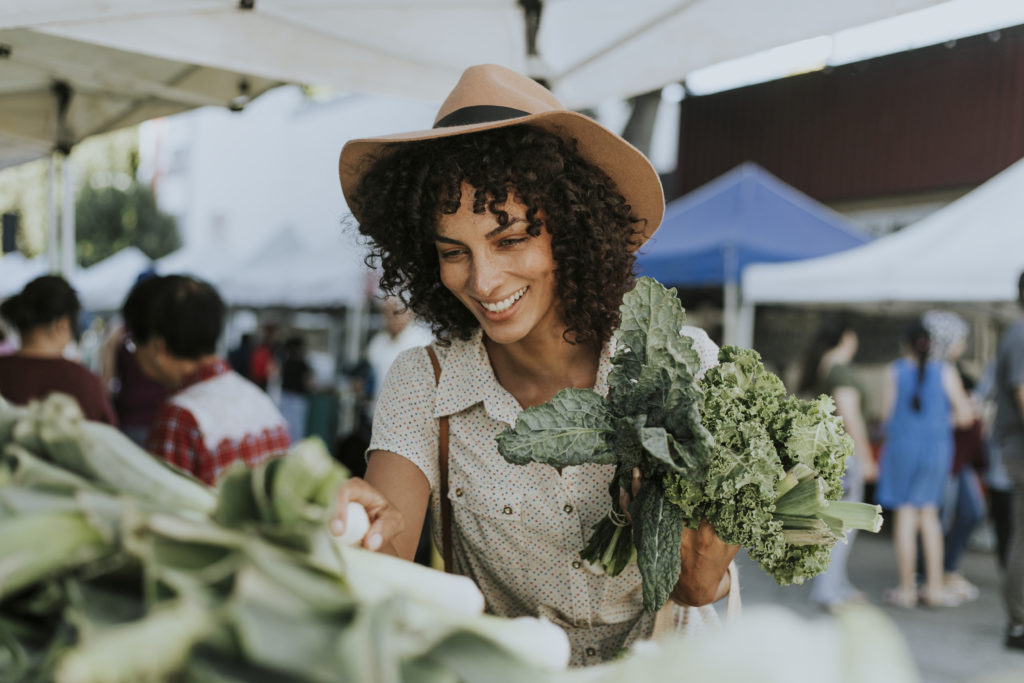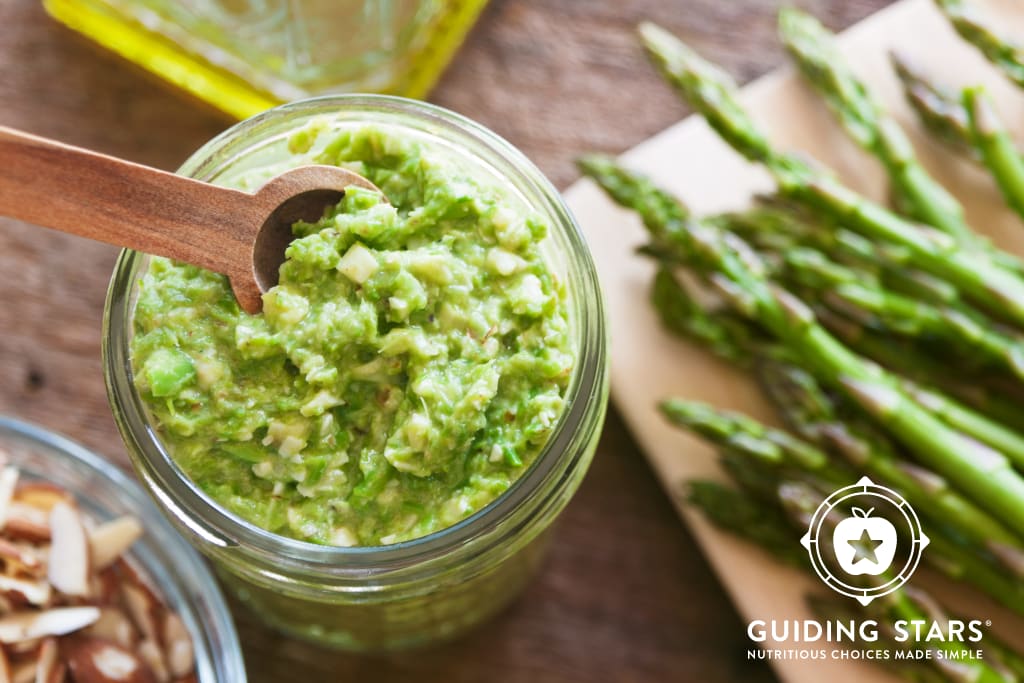
National Farmer’s Market Week begins on August 7th. If you have yet to visit your local market, now is the time to go. There are many reasons to shop at a farmers market. Your money goes directly to the farmers and producers, it supports your community, stimulates the local economy, and promotes sustainable food systems.
Farmers markets are currently overflowing with fruits, veggies, and herbs at their peak of ripeness, variety, and freshness. Are you uncertain of where the nearest farmers market is? Check the Local Harvest website and search by your zip code.
Shop local at the supermarket too
You may not realize that your local supermarket can be a handy source for locally grown produce. During the growing season, you’ll often find special signage throughout the produce section of your store, telling you exactly where those particular fruits and veggies came from. Some stores are even putting together boxes of local produce (which earn Guiding Stars, of course), meaning more savings on the freshest fruits and veggies around.
Now, what to do with all that beautiful, local produce?
Enjoy in season produce as often as you can
Being a person who adores produce, the abundance of summer fruits and veggies is heavenly to me. I try to eat as much fresh produce as I can during the fleeting weeks when each fruit and veggie is at its peak. A few of my favorites include peaches, nectarines, berries, summer squash, beets, and sugar snap peas. We can all benefit from more ideas for utilizing this summer goodness. (If you find yourself in a produce “rut,” I have some tips for you!) Expand your recipe repertoire with our collection of Guiding Stars earning recipes (you can search by primary ingredient, such as peaches or beets). Other places to check for healthy produce recipes include your local Cooperative Extension service website (which will generally have ideas and recipes for produce that’s grown in your local area), the USDA’s MyPlate Kitchen (which allows you to search for recipes by food group), and a general search online might provide inspiration as well.
Preserve the bounty
No matter where your produce comes from (a farmers market, CSA, your own garden, or your local supermarket), you may need to preserve leftovers. You certainly don’t want to let them go to waste! Here are our top ideas:
- Freeze it. This is probably the easiest way to preserve produce, and it also has the benefit of locking in peak flavor and nutrient content. Be sure to process and package the produce appropriately for freezing (some items need to be blanched). Here are guidelines on freezing fruits and veggies safely. Even herbs can be frozen!
- Pickle it. I started pickling this year since this is my first year of vegetable gardening. Quick pickles are an easy introduction and need no heat processing, like regular canned pickles do. There are so many veggies that are tasty when pickled, you’ll be amazed at the variety. Just be sure to follow the instructions carefully (and look for guidance that includes proper food safety procedures). Keep in mind that pickling typically requires a good bit of salt, so this may not be the best choice for people who need to watch their sodium intake.
- Dehydrate it. Whether you use an electric food dehydrator or your oven, dehydrating produce allows for the retention of most nutrients (although vitamins A and C do diminish). The removal of moisture during dehydration essentially concentrates the fruits and veggies, resulting in more calories and a higher sugar level by weight. So, keep in mind that the portions of dehydrated/dried fruits and veggies will be smaller than the fresh versions.
- Ferment it. Fermented food is so hot right now you’d think that it was a new invention! Fermented veggies are typically lacto-fermented, a salty process that allows lactic acid bacteria in the food to thrive, but discourages the growth of other bacteria that would spoil the food. The resulting fermented veggies are packed with gut-healthy probiotics (beneficial bacteria). Although it doesn’t take a lot of expensive equipment, you might consider purchasing a fermentation kit so you have everything you need, including basic instructions. For local instruction, check your local Extension office for an in-person or virtual class. I’ll have a blog post on fermentation coming soon, so check back for that.
Still too much? Donate!
My home garden has performed so well this year that I’ve started donating my excess produce once a week to a local food pantry. This is a win-win situation, and one that I foresee continuing each year. (Here’s a list of which varieties of produce are most desired by food pantries.) To find a food pantry near you that accepts home-grown produce, check the Ample Harvest website and search your zip code. There are many other options that are local, simply search “where to donate fresh produce near me” online and you’ll get some great options.
Pesto Zucchini Rolls
Not only are these appetizers incredibly simple, they’re delicious and pretty. Make up a batch or two for your next party and let the compliments roll in.
View recipe »Rainbow Pizza
If you’re looking for a healthy pizza option that makes eating veggies both fun and delicious, then bookmark this recipe now.
View recipe »Asparagus Pesto
Did you know that pesto can be made not only with just about any green, but with a wide variety of vegetables? Just like any other pesto, you can make it last longer by freezing it.
View recipe »

